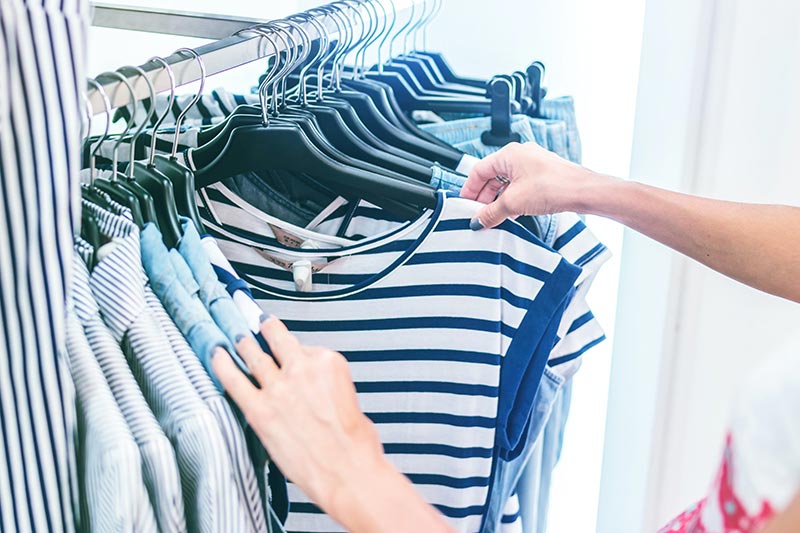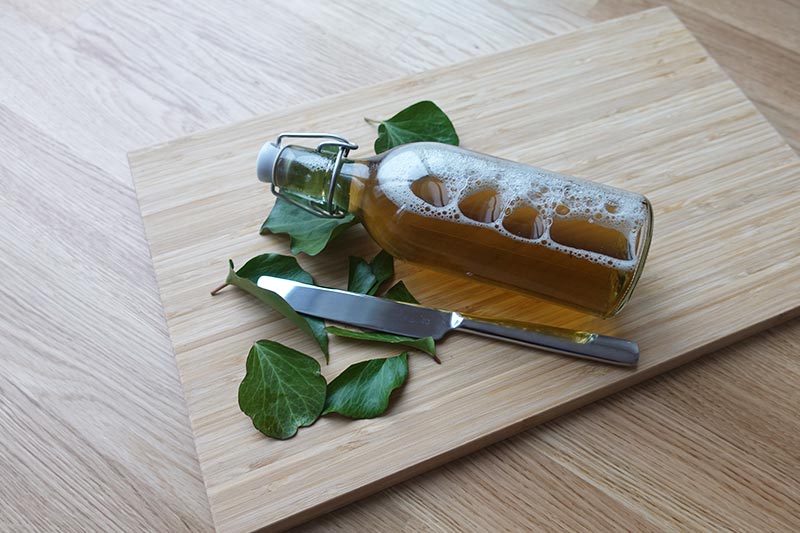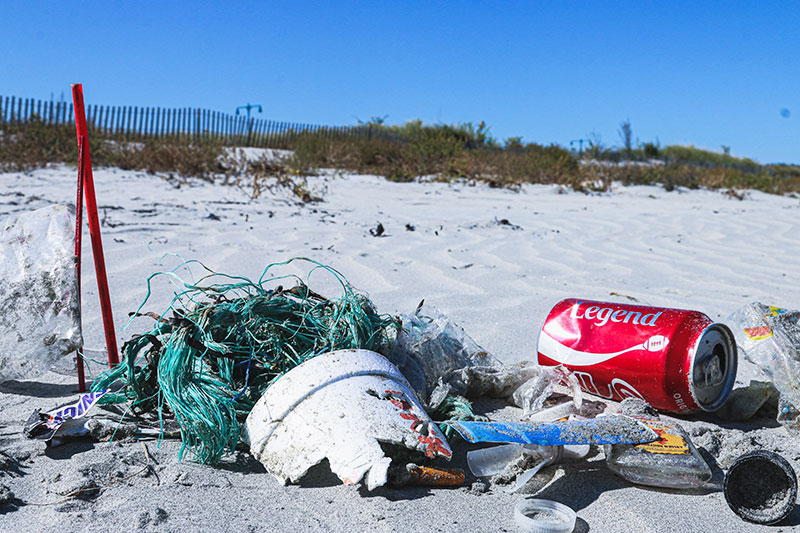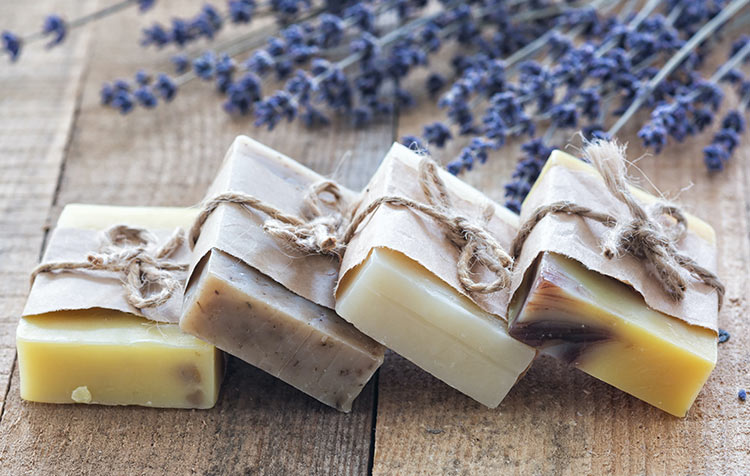How can microplastics be specifically avoided? If you're asking yourself this question right now, you'll get your answer right here! One may not know yet, what microplastics are in the first place - others have been wondering for some time why these small plastic particles are allowed in cosmetics and other everyday products at all.
Whatever brought you to this article: now I'm going to show you how to specifically avoid and reduce microplastics!
Here is already once a short Overview for you:
- Internalize reasons for avoiding microplastics
- Get to know technical terms
- Use CodeCheck App
- Prefer natural Kostmetik products
- Prefer clothing from natural fabrics
- Clean laundry with wash bag
- Dispose of lint filter remnants in the trash
- Use natural alternative for fabric softener
- Plastic-free cleaning and rinsing
- Drive less
- Avoid plastic
- Collect plastic waste
- Inform manufacturer
- Be a role model
What to do against microplastics? 14 tips and ideas
We are poisoning this planet, other living creatures and ultimately ourselves with microplastics - plastic particles that measure less than 5 millimeters. Tire abrasion, cosmetic products, plastic packaging, clothing... the causes of microplastics in the environment are many and varied.
Researchers at the Fraunhofer Institute have calculated that around 330,000 tons of microplastic are produced in Germany every year. Consequently, each of us produces around 4 kilograms of microplastic per year.₁
Time to do something about it! Now you get more reasons and lots of tips to avoid microplastic from me. Let's go!
1. internalize reasons for avoiding microplastics
The mini-plastic is so inconspicuous that at first glance one sees no reason to specifically avoid it. But regardless of whether microplastic enters the environment or the sea primarily (through direct input, e.g. via the washing machine drain) or secondarily (indirectly, mainly through the long-term decomposition of large plastic parts): Microplastics are poison, they are not biodegradable, and they pose a massive threat to all living things on Earth. This is important to know in order to take this problem seriously and to be permanently motivated to avoid microplastics.
Every year, more than one million animals die from our plastic waste and microplastics in nature. In the ocean, the mini-plastics magically attract other pollutants - and can even spread diseases across the ocean to other continents. Ultimately, it ends up Microplastics back in the food chainby fish or mussels, for example, eating the small plastic particles. Who wants to eat plastic that lingers forever? That's disgusting, don't you think? The health consequences for us humans are still largely unexplored. The only thing that is clear is that it has already led to inflammation, physiological disorders and higher mortality rates in marine animals.₂
So we should have both ethics, ecological, as well as health reasons motivate people to avoid microplastics.
2. get to know technical terms
If you don't have your smartphone handy right now, it certainly can't hurt to have a few of the confusing alternative names for microplastics on hand when you're looking at a product's ingredients. Here are the most common technical terms for the mini plastic:
- Polyethylene (PE)
- Polypropylene (PP)
- Polyethylene terephthalate (PET)
- Polyurethane (PUR)
- Acrylates copolymer (AC)
- Polyacrylate (PA)
- Polymethyl methacrylate (PMMA)
- Acrylates crosspolymer (ACS)
- Polystyrene (PS)
- …
But aside from these designations, I don't want to forget that EVERY plastic can become microplastic at some point.
3. use CodeCheck app
As you might have guessed, there are hundreds of names for microplastics. I don't know about you - but I don't feel like learning them all by heart 😉.
To find out which products contain microplastics, I therefore simply use the CodeCheck App. With this I scan the barcode of shampoos or other typical products with microplastics - and immediately see whether it contains microplastics or not. Hit? Then just leave the product on the shelf.
Tip: You may also know that the production of Palm oil destroys the rainforest. With the app, you can also quickly find out if palm oil is in a product.
4. prefer cosmetic products without microplastic
If you want to avoid microplastics, you should look very closely at cosmetics. Because these can not only be free of animal suffering or certified organic, but also sometimes as microplastic-free declared. In fact, there are suppliers of shower gels and shampoos who stuff almost half of their product with microplastics. Crazy, isn't it?
With a simple bar soap I already have a sensible, natural alternative in my hand, which is without microplastics and also without unnecessary plastic packaging gets by.
5. prefer clothes made of natural fabrics.

Around two thirds of the Microplastics in the sea actually comes from synthetic clothing.₃ Small microplastic fibers, which gradually separate from Sweatshirts, swimming trunks and Outdoor functional clothing detach. Especially in the wild ride in the washing machine, microfibers separate from their garment and say goodbye, via the drain, through the too large sieve holes of sewage treatment plants, into rivers and finally into the sea.
Therefore, consciously choose garments that come across as natural as possible and no plastics, such as polyester, polyamide or elastane contain
6. wash clothes with wash bag
So that you don't run off now and give away all your plastic-containing clothes: do you already know the Guppyfriend? This is a simple wash bag, which catches a large part of all plastic fibers of your clothes in the washing machine. After the wash cycle, simply collect the fibers from the corner of the bag and throw them in the plastic trash. Done.
7. dispose of lint filter remnants in the trash
When you clean the lint filter of your washing machine and dryer, dispose of the Please put leftovers in the household or plastic wastebut never in the drain. Otherwise, the fibers will inevitably end up in rivers, lakes and the sea - and cause great damage there. This is another important tip if you want to prevent microplastics from entering the environment.
8. use natural alternative for fabric softener
A Study by Plymouth University in England took a closer look at when many and when rather few microplastic fibers dissolve in the laundry of garments. The result showed that the use of fabric softeners ensures that particularly dissolve many fibers and disappear down the drain.
So in addition to clothing made from natural fabrics and a wash bag, you can also avoid microplastics by choosing a natural Alternative for fabric softener you use. For example something Citric acid or Vinegar!
9. cleaning and rinsing without plastics

In fact, many exist Sponges and Cleaning cloths from millions of microplastic fibers. Of course, microplastics also end up directly down the drain and ultimately where they don't belong.
The more sustainable alternative? Simply repurpose itchy cotton shirts or old bedding into cleaning cloths - and use Wooden dishwashing brushes with agave fibers. With this, much is already gained!
Tip: Even some dishwashing detergents contain microplastics! So why not simply use a Making washing up liquid from ivy yourself? You will quickly realize how easy and cost-saving it is!
10. drive less car
Around 28 percent of the microplastic in the environment comes from tire abrasion.₄ You may be familiar with the so-called Graining from the Formula 1 world? As a result of overloading, small rubber particles gradually detach from the tire and make it increasingly unusable. These detaching rubber particles are nothing other than microplastics. In normal road traffic, tires may not dissolve so intensively, but nevertheless successively. Since microplastics are not biodegradable, they remain somewhere in the environment - and get into the sewage or the sea, for example, through a flushing rain. Not only cars, but also bicycles and shoe soles produce microplastics through abrasion.
Of course, not all microplastics can be avoided. But if you're serious about it, you can, for example, use more sustainable alternatives for your car more often, like the Travel by public transport or train, prefer.
Tip: Surely you can also get some inspiration in the post about the car free life get!
11. avoid plastic
The most effective solution in the fight against microplastics in the ocean, or in the environment in general, is for all of us to use less plastic and avoid unnecessary plastic waste. This is because this trash leads to secondary microplastics as it decomposes into small particles over decades and centuries.
You can find out how to get started, for example, in my book "Plastic-free for beginners" or in the blog article about the preferably plastic free lifestyle experienced
12. collect plastic waste

Not only the conscious avoidance of waste, but also the collection of waste from nature, helps to reduce microplastic in the sea and to stop a further input. After all, it is mainly large parts, such as Plastic bottles, Flip Flops or Disposable bagswhich decompose into microplastics over time. A plastic bottle, for example, takes about 450 years to completely dissolve into its "plastic" individual parts.₅
Just organize a Beach CleanUp or collect garbage during the next walk with your dog.
Tip: I have a global Beach CleanUp Group on Facebook was launched. Here people from all over the world share their tidying actions. Feel free to become part of this truly unique community 🙂 .
13. inform manufacturer
It's great if you're reducing microplastics in your own little world. But once you've got the hang of it, you can tap into further potential by rebuking manufacturers and ensure that products with microplastics disappear from the market. For example, you can make a call, send an email or, when the going gets tough, create a shitstorm. Manufacturers redesign their products.
It is even easier with the Replace Plastic Appwhere you simply scan the barcode of a product that you would have bought if it didn't contain microplastics. The manufacturer is then automatically notified without you having to do anything. Cool, right? I think this is also a valuable and important tip if we all want to avoid microplastics in the long run.
14. be a role model for others
You've learned to adapt your behavior for the good cause. Maybe not just in terms of avoiding microplastics, but also in terms of not eating meat or reducing your long-haul flights. By constantly questioning yourself, learning and positively adapting your behavior, you are a role model for others. For your friendsyou can bring the environmental problem of microplastics and the tips from this article closer to them - or your parentsYou can tell them about your learnings at the dinner table. But last but not least for your children and grandchildrenyou surely want to leave a clean and intact planet to them.
Reducing microplastics is not complicated!
What can you do about microplastics? I think you got your answer today. As you can see, it's really not that difficult to make a conscious effort to reduce the amount of small plastic particles in the environment. As inconspicuous as the microplastic problem may be, regularly make yourself aware of how much you can contribute to the solution every day - and how much you are a great role model for other people with your behavior.
Do you have any questions or your own experience with avoiding microplastics that you would like to share? Then just write me a comment.
Stay sustainable,

References:
₁ Fraunhofer Institute for Environmental, Safety and Energy Technology: Plastics in the Environment - Micro- and Macroplastics - Causes, Quantities, Environmental Fate, Effects, Approaches, Recommendations (June 2018), available at https://t1p.de/t1gh. [18.11.2020].
₂ Bavarian State Office for the Environment (2014): Mikroplastik in der Umwelt, Statuskolloquium, 03.07.2014, p. 17.
₃,₄ Lisbeth Van Cauwenberghe, Ann Vanreusel, Jan Mees, et al. (2013): Microplastic pollution in deep-sea sediments, available at https://t1p.de/hi9g. [18.11.2020].
₅ Kirbach, Roland: Caught in Plastic (as at: 25.06.2015). https://t1p.de/z21w. [09.08.2019].





